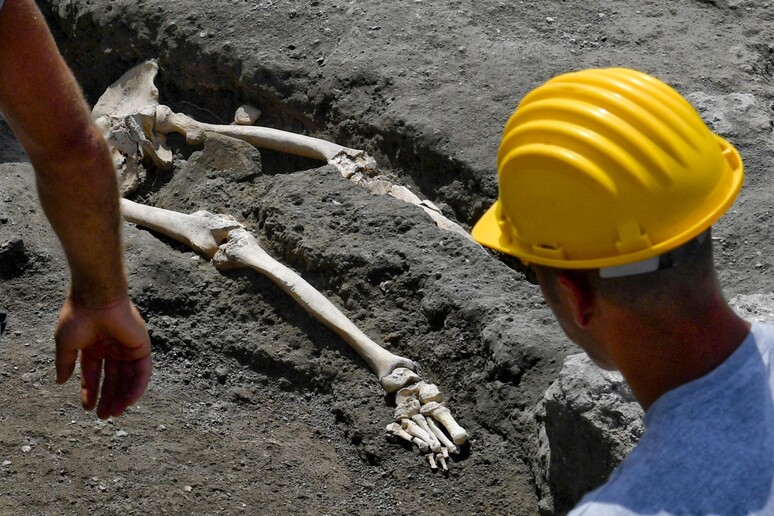Archaeologists on Friday said they
had found what they called the "treasure trove" of Pompeii's
'last fugitive', whose skeleton was discovered earlier this week
with its head knocked off by a huge stone in the eruption.
Twenty silver denari and an iron key, probably his house key,
were found in a leather pouch under the skeleton of the man with
a limp who died gazing at the burning storm of ash and rocks
that was heading his way, Pompeii director Massimo Osanna told
ANSA.
"Twenty silver coins equivalent to 80 sesterces, and 500
euros today, was a sum that an average family in Rome could live
well on for two weeks on", Osanna said.
Having a similar sum on him, Osanna went on, "makes us think
that he wasn't filthy rich but neither was he a poor man.
"He was, perhaps, a merchant, who because of the sick leg
hadn't been persuaded to leave the city in the preceding hours,
when almost everyone else had done so."
The archaeologists spotted the remains of the bag when they
moved the skeleton to take it to a laboratory, Osanna told
reporters.
"Underneath the smashed-in rib bones in his thorax some
organic material was glimpsed, as well as some ferrous oxide,"
he said.
Then the coins were discovered.
"They are silver ones, but belonging to different eras," said
Osanna.
Now the examination of the trove is continuing in the
laboratory, where the skeleton, the remains of the pouch, the
remains of the key and the coins have been taken to try to shed
further light on exactly what happened on that day in the doomed
city 1,900 years ago.
Experts will first of all try to establish the man's
physical condition (broken leg, disabled leg following an
untreated fracture, real age, etc), as well as the history of
the objects.
Some tests have already been assigned to a Policlinico di
Napoli team.
After the exceptional find of the skeleton, Osanna said,
this further discovery "is of great value" alongside the work
being done on new digs.
"It is the objects, and the context of the man's life, that
can supply us with the real details on the lives and stories of
the people of this city".
ALL RIGHTS RESERVED © Copyright ANSA











